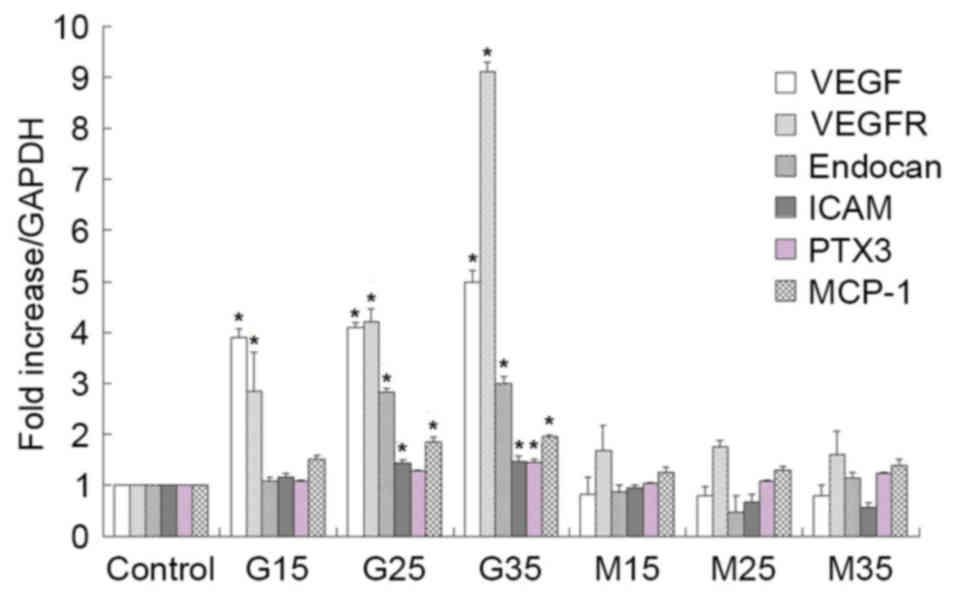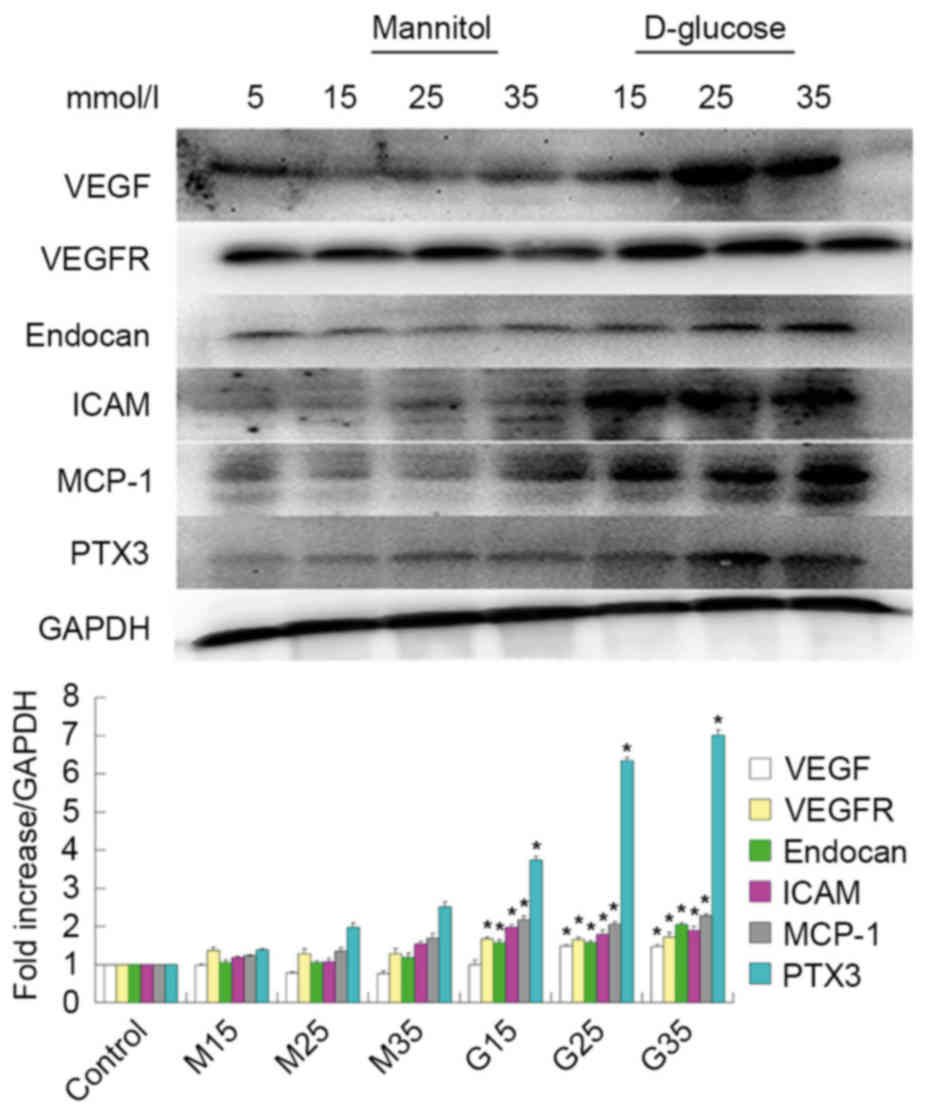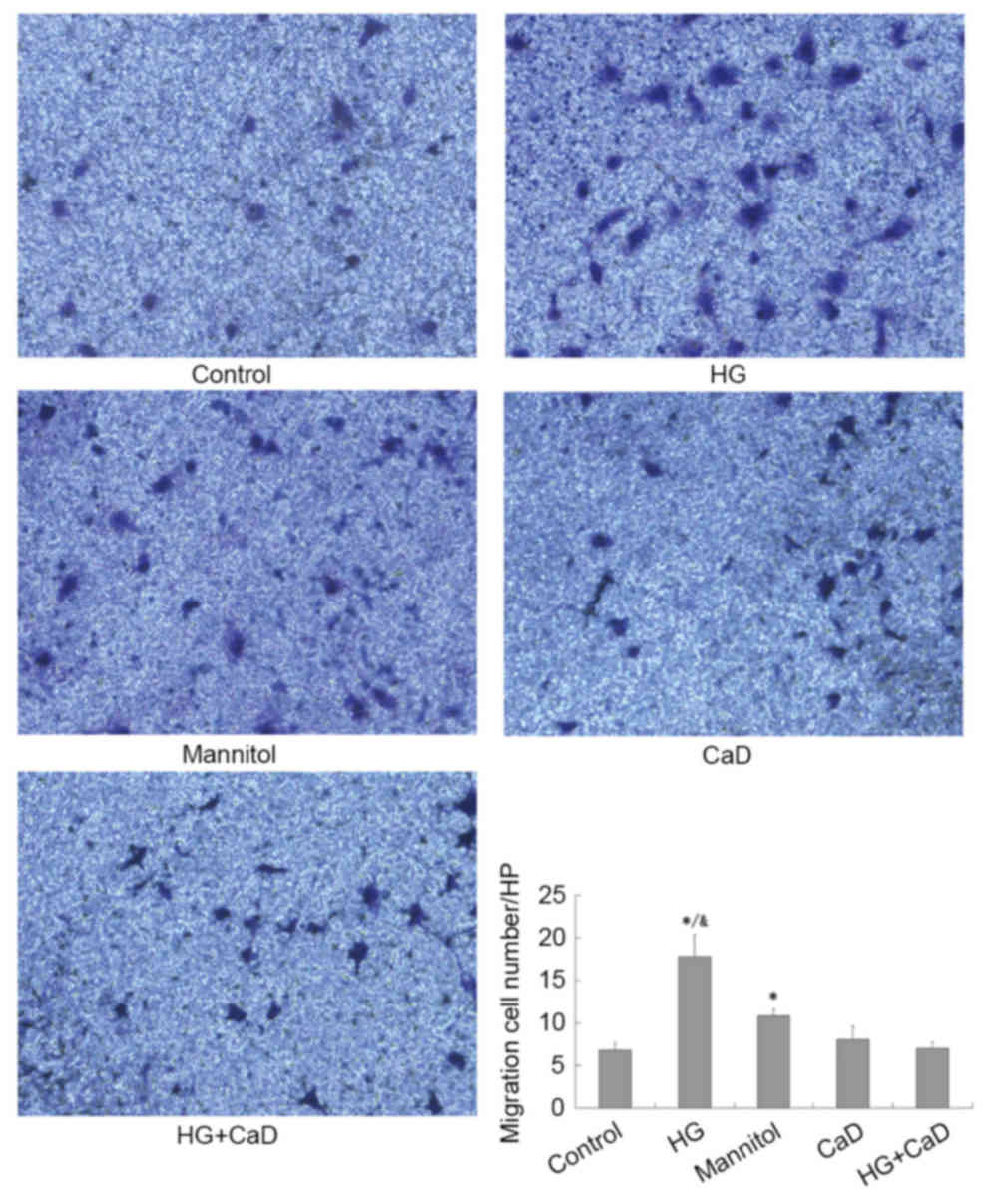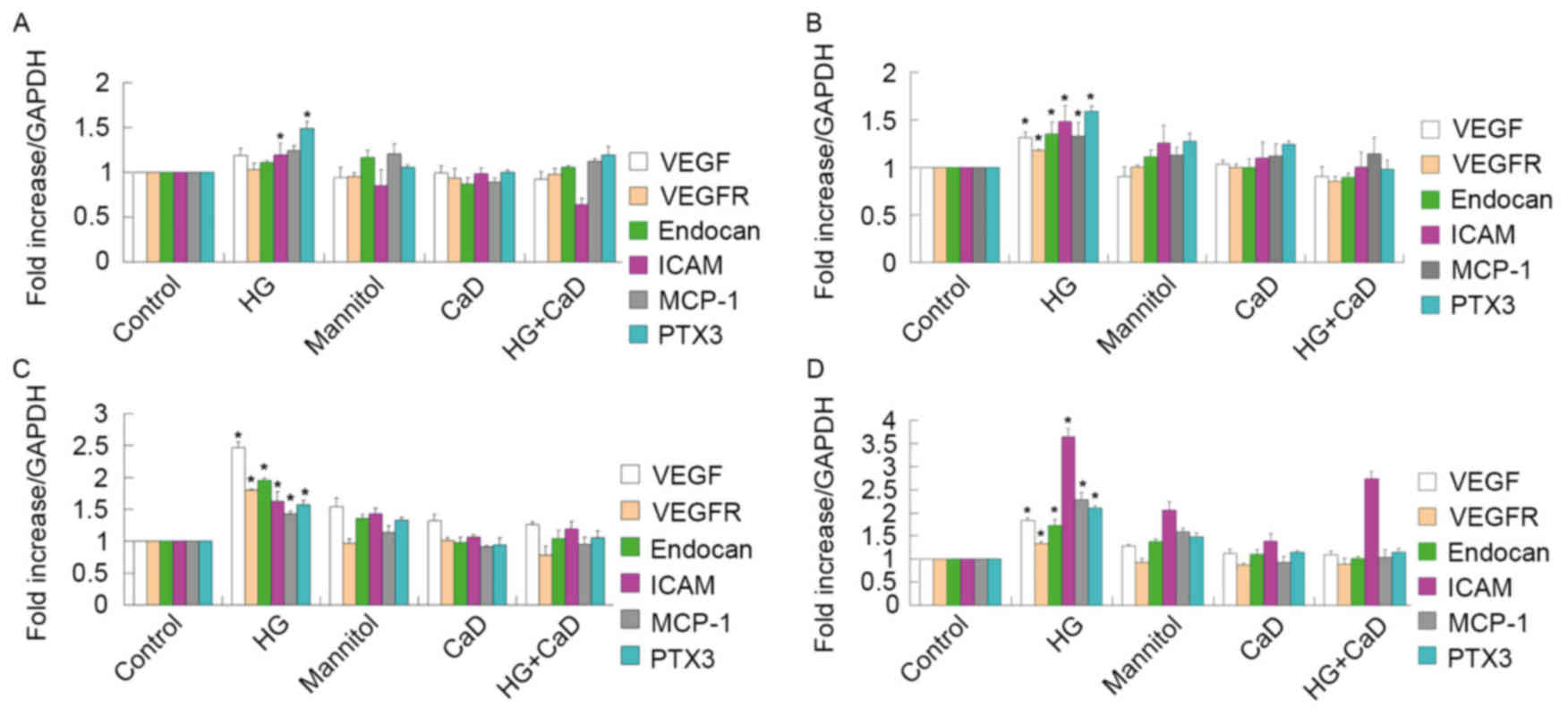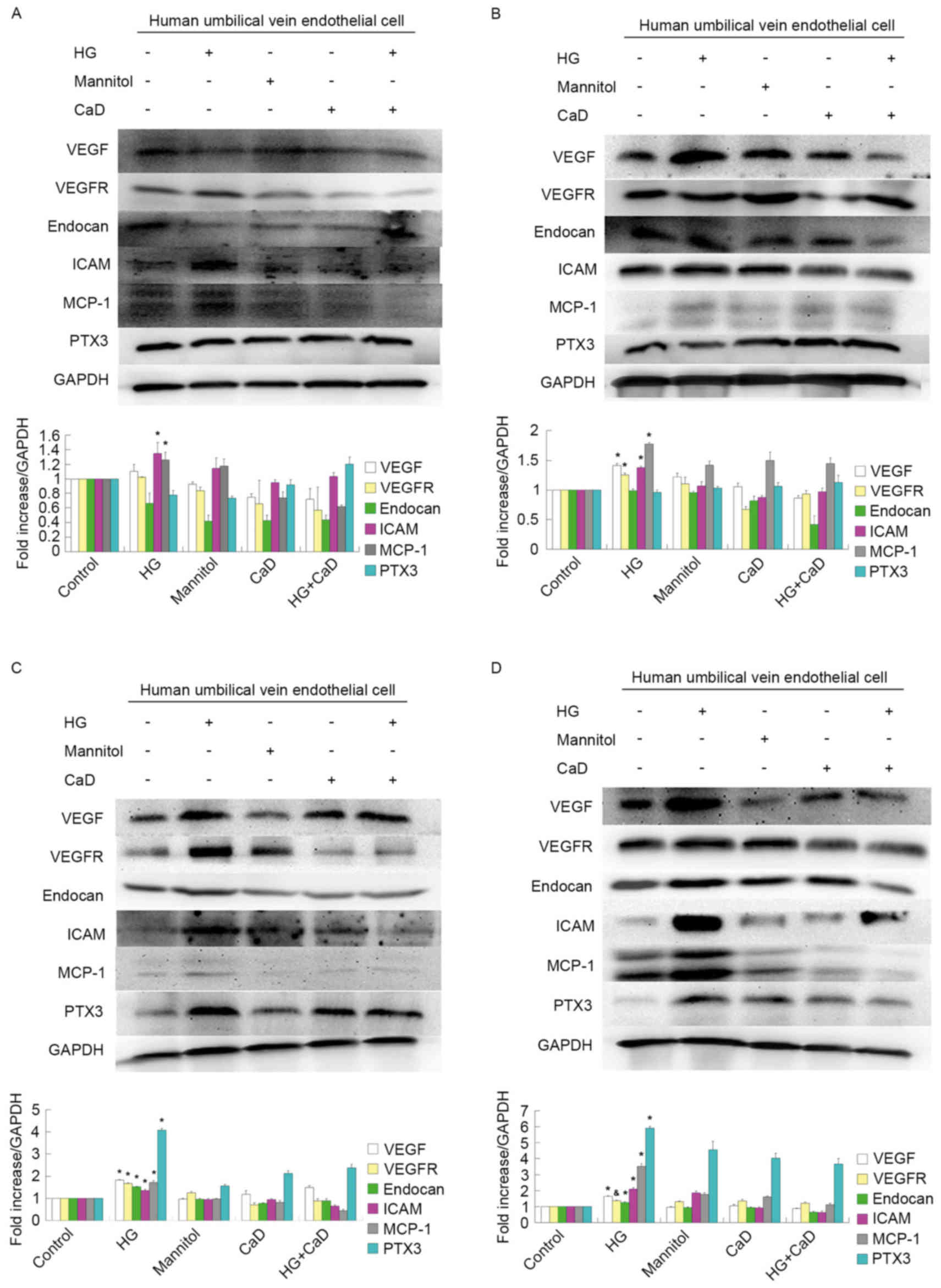|
1
|
International Diabetes Federation, .
Diabetes Atlas (7th edition). 2015.https://www.diabetesatlas.org
|
|
2
|
Tuttle KR, Bakris GL, Bilous RW, Chiang
JL, de Boer IH, Goldstein-Fuchs J, Hirsch IB, Kalantar-Zadeh K,
Narva AS, Navaneethan SD, et al: Diabetic kidney disease: A report
from an ADA Consensus Conference. Am J Kidney Dis. 64:510–533.
2014. View Article : Google Scholar : PubMed/NCBI
|
|
3
|
Fu J, Lee K, Chuang PY, Liu Z and He JC:
Glomerular endothelial cell injury and cross talk in diabetic
kidney disease. Am J Physiol Renal Physiol. 308:F287–F297. 2015.
View Article : Google Scholar : PubMed/NCBI
|
|
4
|
Cheng H and Harris RC: Renal endothelial
dysfunction in diabetic nephropathy. Cardiovasc Haematol Disord
Drug Targets. 14:22–33. 2014. View Article : Google Scholar
|
|
5
|
Navarro-González JF, Mora-Fernández C, de
Fuentes M Muros and García-Pérez J: Inflammatory molecules and
pathways in the pathogenesis of diabetic nephropathy. Nat Rev
Nephrol. 7:327–340. 2011. View Article : Google Scholar : PubMed/NCBI
|
|
6
|
Galkina E and Ley K: Leukocyte recruitment
and vascular injury in diabetic nephropathy. J Am Soc Nephrol.
17:368–377. 2006. View Article : Google Scholar : PubMed/NCBI
|
|
7
|
Sugimoto H, Shikata K, Hirata K, Akiyama
K, Matsuda M, Kushiro M, Shikata Y, Miyatake N, Miyasaka M and
Makino H: Increased expression of intercellular adhesion molecule-1
(ICAM-1) in diabetic rat glomeruli: Glomerular hyperfiltration is a
potential mechanism of ICAM-1 upregulation. Diabetes. 46:2075–2081.
1997. View Article : Google Scholar : PubMed/NCBI
|
|
8
|
Seron D, Cameron JS and Haskard DO:
Expression of VCAM-1 in the normal and diseased kidney. Nephrol
Dial Transplant. 6:917–922. 1991. View Article : Google Scholar : PubMed/NCBI
|
|
9
|
Tejerina T and Ruiz E: Calcium dobesilate:
Pharmacology and future approaches. Gen Pharmacol. 31:357–360.
1998. View Article : Google Scholar : PubMed/NCBI
|
|
10
|
Javadzadeh A, Ghorbanihaghjo A, Adl FH,
Andalib D, Khojasteh-Jafari H and Ghabili K: Calcium dobesilate
reduces endothelin-1 and high-sensitivity C-reactive protein serum
levels in patients with diabetic retinopathy. Mol Vis. 19:62–68.
2013.PubMed/NCBI
|
|
11
|
Rabe E, Jaeger KA, Bulitta M and Pannier
F: Calcium dobesilate in patients suffering from chronic venous
insufficiency: A double-blind, placebo-controlled, clinical trial.
Phlebology. 26:162–168. 2011. View Article : Google Scholar : PubMed/NCBI
|
|
12
|
Hall JF: Modern management of hemorrhoidal
disease. Gastroenterol Clin North Am. 42:759–772. 2013. View Article : Google Scholar : PubMed/NCBI
|
|
13
|
Zhang X: Therapeutic effects of calcium
dobesilate on diabetic nephropathy mediated through reduction of
expression of PAI-1. Exp Ther Med. 5:295–299. 2013. View Article : Google Scholar : PubMed/NCBI
|
|
14
|
Jafarey M, Ashtiyani S Changizi and Najafi
H: Calcium dobesilate for prevention of gentamicin-induced
nephrotoxicity in rats. Iran J Kidney Dis. 8:46–52. 2014.PubMed/NCBI
|
|
15
|
Pan SL, Guh JH, Huang YW, Chern JW, Chou
JY and Teng CM: Identification of apoptotic and antiangiogenic
activities of terazosin in human prostate cancer and endothelial
cells. J Urol. 169:724–729. 2003. View Article : Google Scholar : PubMed/NCBI
|
|
16
|
Irwin DC, van Patot MC Tissot, Tucker A
and Bowen R: Direct ANP inhibition of hypoxia-induced inflammatory
pathways in pulmonary microvascular and macrovascular endothelial
monolayers. Am J Physiol Lung Cell Mol Physiol. 288:L849–L859.
2005. View Article : Google Scholar : PubMed/NCBI
|
|
17
|
Demirtas S, Caliskan A, Guclu O, Yazici S,
Karahan O, Yavuz C and Mavitas B: Can calcium dobesilate be used
safely for peripheral microvasculopathies that require
neoangiogenesis? Med Sci Monit Basic Res. 19:253–257. 2013.
View Article : Google Scholar : PubMed/NCBI
|
|
18
|
Zhang X, Liu W, Wu S, Jin J, Li W and Wang
N: Calcium dobesilate for diabetic retinopathy: A systematic review
and meta-analysis. Sci China Life Sci. 58:101–107. 2015. View Article : Google Scholar : PubMed/NCBI
|
|
19
|
Krakoff J, Lindsay RS, Looker HC, Nelson
RG, Hanson RL and Knowler WC: Incidence of retinopathy and
nephropathy in youth-onset compared with adult-onset type 2
diabetes. Diabetes Care. 26:76–81. 2003. View Article : Google Scholar : PubMed/NCBI
|
|
20
|
Seyer-Hansen K: Renal hypertrophy in
experimental diabetes mellitus. Kidney Int. 23:643–646. 1983.
View Article : Google Scholar : PubMed/NCBI
|
|
21
|
Seyer-Hansen K: Renal hypertrophy in
streptozotocin-diabetic rats. Clin Sci Mol Med. 51:551–555.
1976.PubMed/NCBI
|
|
22
|
Nyengaard JR and Rasch R: The impact of
experimental diabetes mellitus in rats on glomerular capillary
number and sizes. Diabetologia. 36:189–194. 1993. View Article : Google Scholar : PubMed/NCBI
|
|
23
|
Osterby R and Nyberg G: New vessel
formation in the renal corpuscles in advanced diabetic
glomerulopathy. J Diabet Complications. 1:122–127. 1987. View Article : Google Scholar : PubMed/NCBI
|
|
24
|
Wehner H and Nelischer G: Morphometric
investigations on intrarenal vessels of streptozotocin-diabetic
rats. Virchows Arch A Pathol Anat Histopathol. 419:231–235. 1991.
View Article : Google Scholar : PubMed/NCBI
|
|
25
|
Nakagawa T, Kosugi T, Haneda M, Rivard CJ
and Long DA: Abnormal angiogenesis in diabetic nephropathy.
Diabetes. 58:1471–1478. 2009. View Article : Google Scholar : PubMed/NCBI
|
|
26
|
Kanesaki Y, Suzuki D, Uehara G, Toyoda M,
Katoh T, Sakai H and Watanabe T: Vascular endothelial growth factor
gene expression is correlated with glomerular neovascularization in
human diabetic nephropathy. Am J Kidney Dis. 45:288–294. 2005.
View Article : Google Scholar : PubMed/NCBI
|
|
27
|
Min W and Yamanaka N: Three-dimensional
analysis of increased vasculature around the glomerular vascular
pole in diabetic nephropathy. Virchows Arch A Pathol Anat
Histopathol. 423:201–207. 1993. View Article : Google Scholar : PubMed/NCBI
|
|
28
|
Yuan J, Fang W, Lin A, Ni Z and Qian J:
Angiopoietin-2/Tie2 signaling involved in TNF-α induced peritoneal
angiogenesis. Int J Artif Organs. 35:655–662. 2012.PubMed/NCBI
|
|
29
|
Cooper ME, Vranes D, Youssef S, Stacker
SA, Cox AJ, Rizkalla B, Casley DJ, Bach LA, Kelly DJ and Gilbert
RE: Increased renal expression of vascular endothelial growth
factor (VEGF) and its receptor VEGFR-2 in experimental diabetes.
Diabetes. 48:2229–2239. 1999. View Article : Google Scholar : PubMed/NCBI
|
|
30
|
Hohenstein B, Hausknecht B, Boehmer K,
Riess R, Brekken RA and Hugo CP: Local VEGF activity but not VEGF
expression is tightly regulated during diabetic nephropathy in man.
Kidney Int. 69:1654–1661. 2006. View Article : Google Scholar : PubMed/NCBI
|
|
31
|
Baelde HJ, Eikmans M, Doran PP, Lappin DW,
de Heer E and Bruijn JA: Gene expression profiling in glomeruli
from human kidneys with diabetic nephropathy. Am J Kidney Dis.
43:636–650. 2004. View Article : Google Scholar : PubMed/NCBI
|
|
32
|
Baelde HJ, Eikmans M, Lappin DW, Doran PP,
Hohenadel D, Brinkkoetter PT, Van der Woude FJ, Waldherr R,
Rabelink TJ, de Heer E and Bruijn JA: Reduction of VEGF-A and CTGF
expression in diabetic nephropathy is associated with podocyte
loss. Kidney Int. 71:637–645. 2007. View Article : Google Scholar : PubMed/NCBI
|
|
33
|
Lindenmeyer MT, Kretzler M, Boucherot A,
Berra S, Yasuda Y, Henger A, Eichinger F, Gaiser S, Schmid H,
Rastaldi MP, et al: Interstitial vascular rarefaction and reduced
VEGF-A expression in human diabetic nephropathy. J Am Soc Nephrol.
18:1765–1776. 2007. View Article : Google Scholar : PubMed/NCBI
|
|
34
|
García-García PM, Getino-Melián MA,
Domínguez-Pimentel V and Navarro-González JF: Inflammation in
diabetic kidney disease. World J Diabetes. 5:431–443. 2014.
View Article : Google Scholar : PubMed/NCBI
|
|
35
|
Pickup JC: Inflammation and activated
innate immunity in the pathogenesis of type 2 diabetes. Diabetes
Care. 27:813–823. 2004. View Article : Google Scholar : PubMed/NCBI
|
|
36
|
Navarro JF, Milena FJ, Mora C, León C and
García J: Renal pro-inflammatory cytokine gene expression in
diabetic nephropathy: Effect of angiotensin-converting enzyme
inhibition and pentoxifylline administration. Am J Nephrol.
26:562–570. 2006. View Article : Google Scholar : PubMed/NCBI
|
|
37
|
Sekizuka K, Tomino Y, Sei C, Kurusu A,
Tashiro K, Yamaguchi Y, Kodera S, Hishiki T, Shirato I and Koide H:
Detection of serum IL-6 in patients with diabetic nephropathy.
Nephron. 68:284–285. 1994. View Article : Google Scholar : PubMed/NCBI
|
|
38
|
Moriwaki Y, Yamamoto T, Shibutani Y, Aoki
E, Tsutsumi Z, Takahashi S, Okamura H, Koga M, Fukuchi M and Hada
T: Elevated levels of interleukin-18 and tumor necrosis
factor-alpha in serum of patients with type 2 diabetes mellitus:
Relationship with diabetic nephropathy. Metabolism. 52:605–608.
2003. View Article : Google Scholar : PubMed/NCBI
|
|
39
|
Navarro JF, Mora C, Muros M and García J:
Urinary tumour necrosis factor-alpha excretion independently
correlates with clinical markers of glomerular and
tubulointerstitial injury in type 2 diabetic patients. Nephrol Dial
Transplant. 21:3428–3434. 2006. View Article : Google Scholar : PubMed/NCBI
|
|
40
|
Royall JA, Berkow RL, Beckman JS,
Cunningham MK, Matalon S and Freeman BA: Tumor necrosis factor and
interleukin 1 alpha increase vascular endothelial permeability. Am
J Physiol. 257:L399–L410. 1989.PubMed/NCBI
|
|
41
|
Navarro-González JF and Mora-Fernández C:
The role of inflammatory cytokines in diabetic nephropathy. J Am
Soc Nephrol. 19:433–442. 2008. View Article : Google Scholar : PubMed/NCBI
|
|
42
|
Vestra M Dalla, Mussap M, Gallina P,
Bruseghin M, Cernigoi AM, Saller A, Plebani M and Fioretto P:
Acute-phase markers of inflammation and glomerular structure in
patients with type 2 diabetes. J Am Soc Nephrol. 16 Suppl
1:S78–S82. 2005. View Article : Google Scholar : PubMed/NCBI
|
|
43
|
Ruef C, Budde K, Lacy J, Northemann W,
Baumann M, Sterzel RB and Coleman DL: Interleukin 6 is an autocrine
growth factor for mesangial cells. Kidney Int. 38:249–257. 1990.
View Article : Google Scholar : PubMed/NCBI
|
|
44
|
Mariño E and Cardier JE: Differential
effect of IL-18 on endothelial cell apoptosis mediated by TNF-alpha
and Fas (CD95). Cytokine. 22:142–148. 2003. View Article : Google Scholar : PubMed/NCBI
|
|
45
|
Stuyt RJ, Netea MG, Geijtenbeek TB,
Kullberg BJ, Dinarello CA and van der Meer JW: Selective regulation
of intercellular adhesion molecule-1 expression by interleukin-18
and interleukin-12 on human monocytes. Immunology. 110:329–334.
2003. View Article : Google Scholar : PubMed/NCBI
|
|
46
|
Bertani T, Abbate M, Zoja C, Corna D,
Perico N, Ghezzi P and Remuzzi G: Tumor necrosis factor induces
glomerular damage in the rabbit. Am J Pathol. 134:419–430.
1989.PubMed/NCBI
|
|
47
|
DiPetrillo K, Coutermarsh B and Gesek FA:
Urinary tumor necrosis factor contributes to sodium retention and
renal hypertrophy during diabetes. Am J Physiol Renal Physiol.
284:F113–F121. 2003. View Article : Google Scholar : PubMed/NCBI
|
|
48
|
Dipetrillo K and Gesek FA: Pentoxifylline
ameliorates renal tumor necrosis factor expression, sodium
retention, and renal hypertrophy in diabetic rats. Am J Nephrol.
24:352–359. 2004. View Article : Google Scholar : PubMed/NCBI
|



